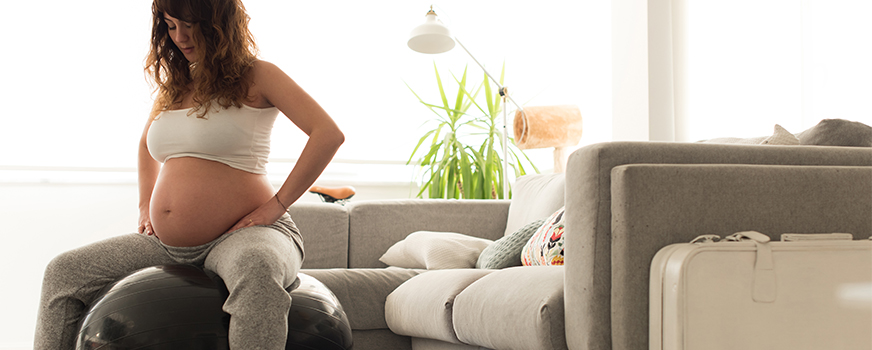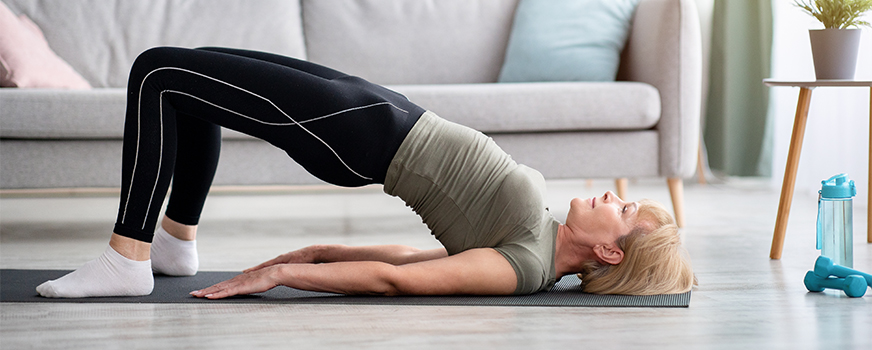
Pelvic floor muscles are often muscles we don’t think about until we need to. But just like any health approach, prevention is better than treatment. And that’s where Kegels come in. Having a strong pelvic floor is important for every woman, and it is especially important when it comes to pregnancy and postpartum recovery. Read on for more information about kegel exercises and how they can help your pelvic floor health!
What Are Kegels?
Kegel exercises are simple clench-and-release exercises that you can do to make the muscles of your pelvic floor stronger. Your pelvis is the area between your hips that holds your reproductive organs. The pelvic floor is really a series of muscles and tissues that forms a sling, or hammock, at the bottom of your pelvis. This sling holds your organs in place. A weak pelvic floor may lead to issues such as the inability to control your bowels or bladder.
Weak pelvic floor muscle symptoms may include:
- Leaking urine when coughing, sneezing, laughing, or running
- Failing to reach the toilet in time
- Passing wind when bending over or lifting
- Reduced sensation in the vagina
- Tampons that dislodge or fall out
- Distinct bulge at the vaginal opening
- Sensation of heaviness in the vagina
- Heaviness or dragging in the pelvis or back
- Recurrent urinary tract infections or thrush
- Vulval pain, pain with sex, or inability to orgasm
If you are feeling any of these symptoms, kegel exercises might be right for you. Kegels cannot be done in excess, but it is still important to speak to your doctor about any pelvic floor muscle concerns to ensure you are on the right path toward recovery or rehabilitation.

How to do Kegels
Find the Right Muscles
Once you’ve identified your pelvic floor muscles you can do the exercises in any position, although you might find it easiest to do them lying down at first.
Finding your pelvic floor muscles is fairly simple. Try stopping the flow of your urine when you are sitting on the toilet. Only do this until you learn how it feels. You can also insert a finger into your vagina and squeeze the muscles in your vagina around it. You should feel pressure around your finger. The muscles you feel ‘lifting’ inside of you when you are trying these activities are the same ones you strengthen during Kegel exercises.
Start Slowly
Try squeezing your pelvic floor muscles for 3 seconds, then release for 3 seconds. Do this 10 times in a row. That’s one set. If you can’t do 10, do as many as you can and build up over time.
Perfect Your Technique
To do Kegels, imagine you are sitting on a marble and tighten your pelvic muscles as if you’re lifting the marble. Try it for three seconds at a time, then relax for a count of three.
Maintain Your Focus
For best results, focus on tightening only your pelvic floor muscles. Be careful not to flex the muscles in your abdomen, thighs, or buttocks. Avoid holding your breath. Instead, breathe freely during the exercises.
Repeat three times a day. Try to work up to one set of 10 Kegels two to three times a day. Make Kegel exercises part of your daily routine. You can do Kegel exercises discreetly just about any time, whether you’re sitting at your desk or relaxing on the couch. If you do Kegel exercises regularly, most women say they notice less urine leakage within 12 weeks after starting – and sticking with – a Kegel exercise routine.
Don’t make a habit of using Kegel exercises to start and stop your urine stream. Doing Kegel exercises while emptying your bladder can actually lead to incomplete emptying of the bladder – which increases the risk of a urinary tract infection.

Pelvic Floor Exercises Benefits
Benefits of Kegels for Women
When they’re working as they should, your pelvic floor muscles may never cross your mind. But as you age, they can start to weaken. This puts you at risk for a condition called pelvic organ prolapse (POP) where your pelvic organs essentially start to droop.
Situations that may increase your chances of POP are:
- Certain exercises and contact sports
- Frequent bouts of sneezing, coughing, laughing
- Genetics
- Natural aging process
- Pregnancy
- Surgery in your pelvic area
- Vaginal childbirth
- Weight gain
Keeping these muscles ‘fit’ helps keep your uterus, bladder, and your bowel from sagging down into the vagina. Besides being extremely uncomfortable, this can also cause urinary incontinence. Kegel exercises can help strengthen your pelvic floor to help prevent future chances of pelvic organ prolapse.
Kegel exercises are especially important for women before, during, and after pregnancy. Kegels before pregnancy help prepare your body for the new strain it will be under, and continuing Kegel exercises during pregnancy can help with bladder control. Practicing Kegels after birth helps rebuild and strengthen the pelvic floor muscles to create a healthier pelvic floor for your future.
Benefits of Kegels for Men
Did you know Kegel exercises aren’t just for women? They can strengthen men’s pelvic floor muscles, too. These muscles support the bladder and bowel and affect sexual function. Kegels can help men having trouble with bladder or bowel incontinence. They can make sex better by giving more feeling during an orgasm and greater control over ejaculation, which in turn can help the conception process when trying to get pregnant.
Incorporating Kegel exercises into your daily routine can be a simple addition that can make a huge impact on your health. The sooner you start them, the stronger and more prepared your pelvic floor will be for the future. Whether you’re strengthening your pelvic floor muscles to prepare for pregnancy or trying to rehabilitate weakened muscles, Kegels are a great tool in any stage of pregnancy or life.



